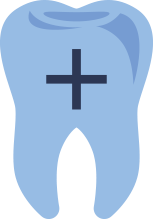
Dental Insurance Helps You Handle The Unexpected
The cost of not taking care of your oral health could be more. Those without individual dental coverage are less likely to get routine dental care, meaning they seek out a dentist only when they have a problem. By then, more extensive and more expensive measures may be necessary, and major problems linked to poor oral health like heart disease and diabetes are more likely to appear
Common dental emergencies
The most common dental emergency is usually a toothache. If you’ve ever had one, you know that a toothache can disrupt your sleep, keep you from eating properly and interfere with work, school and other everyday activities. A visit to the dentist is always recommended when tooth pain is persistent.
Other examples of dental emergencies are pain and swelling in your mouth or gums; an extruded tooth, which is a tooth that has been moved out of its normal position; a tooth that has been knocked out; or having an object lodged between your teeth that flossing won’t remove.
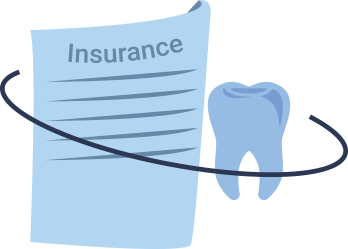
What is dental insurance?
Dental insurance pays a portion of costs associated with preventive, minor, and some major dental care.How does dental insurance work? What do I pay for?
You pay a monthly amount—this is your premium. You pay for a certain amount out-of-pocket for services covered by your plan before your insurance starts paying—this is your deductible. After you meet your deductible, you are responsible for a percentage of covered expenses—this is your coinsurance. Most Golden Rule Insurance Company dental plans feature either a 20% or 30% coinsurance. Under some dental plans, you might pay a fixed cost for certain services, like X-rays—this is called a copay.
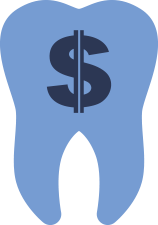

How much will dental plans cover? Are there limits to what they’ll pay?
Yes. Most dental insurance plans have a maximum benefit for the year. The an annual range for companies varied but it is around $1,000 to $3,500 per year.Does the Affordable Care Act ACA cover dental?
No, the ACA, also known as Obamacare, does not cover dental coverage for adults. You will not face a tax penalty for not having dental insurance. However, the Affordable Care Act does mandate that dental insurance be made available to you if you have children, though you aren’t required to buy coverage for yourself as an adult.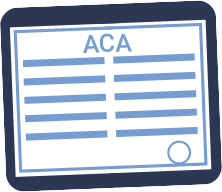

Can I buy dental insurance without having health insurance?
Yes. It is standalone coverage. You do not need a major medical plan to purchase a dental plan.What do most dental insurance plans cover?
Dental plans include coverage for preventive care like routine exams, cleanings, and X-rays. Some plans require a copay for preventive services while others cover those services 100% with no copay. It depends on the plan you choose, but preventive services are usually covered. Many dental plans also include coverage for basic services like fillings and extractions, and major services like root canals, crowns and more.
Is there a waiting period for dental insurance once I’m covered?
It depends. There is no waiting period on preventive services once you become covered, meaning as soon as you purchase the dental insurance you would be able to use the preventive care benefits. While some plans have no waiting periods, on other plans basic and major services may have waiting periods ranging from 4 to 12 months.
What is the difference between in-network and out-of-network care?
Cost. In-network dentists agree to accept a lower negotiated rate on services, meaning you pay less before your insurance carrier even gets involved. Non-network dentists can bill a patient for any remaining amount up to the billed charge.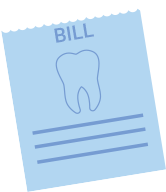

Are there special plans or dental insurance for seniors?
Many dental plans have no age limit for coverage, so customers of any age can enroll in coverage. However, there are plans available specifically geared towards customers around Medicare age that may offer more age-relevant benefits. In many states, plans are available for customers age 64 and older that include coverage for hearing aids and exams.Understanding dental costs
Average dentistry costs in the U.S. A 2016 report by the American Dental Association's Health Policy Institute states that people who visited a dentist at least once In 2012 had an average of $685 worth of dental care.
If you did need dental work, your out-of-pocket costs would depend on whether or not you have dental insurance and what type of plan you have. If you have insurance or a discount plan, your cost could be reduced by anywhere from 10–100 percent. This is dependent on the type of plan and the type of service. In general, preventive services have the highest percentage covered by insurance. Major services like crowns have the lowest coverage and as a result require you to pay more out-of-pocket.

Dentist cleaning costs
If you have dental insurance, some preventive services like cleanings and exams may be covered 100 percent, so be sure to check with your dental office. Average prices for preventive services are: Basic cleaning: $70–200 X-rays: $20–250 Dentist exam: $50–150Dental filling costs
The price for filling a cavity largely depends on two things. First, tooth-filling costs vary depending on the number of surfaces involved. Filling cavities that involve two surfaces will cost less to fill than those with three surfaces. Second, the type of filling used can affect the price. There are two types of fillings normally used to fill cavities: amalgam and resin. Resin composites, the tooth-colored type of material, are usually more expensive than amalgam, or silver-colored fillings. Amalgam 1–2 surfaces: $50–150 Resin composite 1–2 surfaces: $90–250Root canal
Teeth can have more than one root, so this is a factor in the cost of a root canal. The location of the tooth also makes a difference. Front tooth: $300–1,500 Bicuspid: $400–1,800 Molar: $500–2,000 These are average prices. The final root canal costs with insurance would again depend on where it was needed and how much your insurance plan covers.Dental crown costs
As with a filling, the cost of a crown also called a cap depends on the material used. So how much does a crown cost on average? Porcelain fused to metal: $500–1,500 Gold alloy or base metal alloys: $600–2,500 All porcelain: $800–3,000Tooth extraction
There are a lot of factors that go into the cost of tooth extraction. If the tooth is fully erupted or above the gum line, the kind of anesthesia used, the condition of the tooth, if gum or bone also needs to be removed, and if the removal is an emergency or not all play into the cost.How much does a tooth extraction cost?
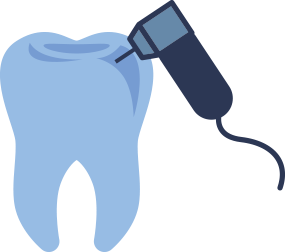
Non-surgical: $75–300
Surgical: $150–650
Wisdom tooth removal costs are higher.
Simple extraction: $75–200
Impacted extraction: $225–600
What does my dental insurance cover?
While more than 3 out of 4 Americans have dental insurance1, many don’t fully understand what dental insurance does and doesn’t cover. This quick guide to dental insurance can help you get a better understanding of how coverage usually works.



The purpose of dental coverage
Dental insurance is designed to help you offset the cost of your dental care and to help you maintain good overall oral health. That’s why we focus on preventive care to catch signs and symptoms of dental disease early. This could reduce the chance that you will need more complex treatment later. If an issue does arise, dental insurance will usually help cover a portion of the treatment cost, so you don’t have to pay the full bill yourself. . This combination of preventive services covered at 100% and lower out-of-pocket costs makes dental insurance a valuable benefitWhat is covered: 100-80-50 coverage structure
The emphasis on preventive coverage and sharing of costs on other procedures is reflected in the structure for most dental insurance plans. As part of this structure, your dental insurance usually covers: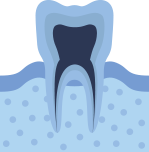

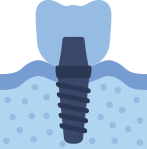


What may not be covered
Select procedures: While it differs from plan to plan, some dental insurance may not cover select procedures such as orthodontia.
Additional plan information
These limitations may also apply to your dental insurance: Waiting period: This is the period of time before you are eligible to receive benefits for all or certain dental treatments. Waiting periods are more common with individual plans2 but also apply to employer-sponsored plans in some industries. This can sometimes be waived if you prove you had no gap in your dental coverage before purchasing a plan.


